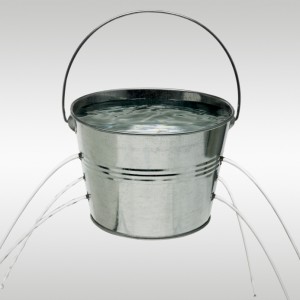How to Use Marketing Automation to its Fullest
 Learn how to use marketing automation to its fullest. Marketing automation is designed to turn website visitors into leads and then into life-long customers. It is a strategic process of generating leads and subsequently guiding them through the buying journey until they are ready to make a purchase. Marketing automation streamlines the entire lead management process by eliminating time-consuming and expensive manual labor from the process. Let’s discuss how to use marketing automation to its fullest.
Learn how to use marketing automation to its fullest. Marketing automation is designed to turn website visitors into leads and then into life-long customers. It is a strategic process of generating leads and subsequently guiding them through the buying journey until they are ready to make a purchase. Marketing automation streamlines the entire lead management process by eliminating time-consuming and expensive manual labor from the process. Let’s discuss how to use marketing automation to its fullest.
Generates Leads
Marketing automation systematically tracks every visitor on a website. Automation software starts the process at the moment of initial engagement by capturing the location and visiting patterns of every user on any given website. It deciphers the country the user lives in, the number of pages they visited, and even how long they spent on each specific page.
Creates Profiles on Leads
Marketing automation software then uses online registrations and forms to extract additional information on each lead. Additional demographics can be easily obtained using free offers for valuable information or services in exchange for a visitor filling in contact information like their email address.
Divides Leads into Segments
Once a profile has been started for each lead, they can be divided into lead segments or groups based on similar characteristics and interests. It is too difficult to provide a truly personalized approach to every visitor on a website, since most successful websites have hundreds or even thousands of visitors each day. Breaking them down into segments is a more realistic approach.
Nurture Leads with Relevant Campaigns
Now that leads have been divided into categories based on an initial profile, they can be targeted using strategic and compelling lead nurturing campaigns. Lead nurturing content needs to be informative and relevant, while guiding the lead in the right direction. It must provide value to the reader to keep them interested.
Scoring each Lead
Throughout the nurturing process, marketing automation software will score each lead based on predetermined criteria. Marketers first create a profile for a typical lead based on the behavioral and demographic characteristics of their existing consumers. Each aspect of the profile is ranked based on the strength of the indicator. This lead scoring profile is then used to evaluate where the lead is at in their buying process and how likely they are to make a purchase.
Marketing Automation Builds Stronger Relationships
Every component of the marketing automation process is focused on learning more about each lead, so content can be customized to benefit their needs. The more emphasis that is put on nurturing leads in a useful and relevant manner will result in stronger relationships. As long as the same quality of service continues after a lead has committed to a purchase, this will create a greater loyalty between the consumer and the business.
Marketing automation software is focused on managing the lead’s lifecycle from initial engagement, through to lead nurturing and lead qualification, to the moment the lead is handed off to the sales team for conversion. It is a complete process for tracking and directing leads using an automated, yet personalized approached.








 A lead has marginal value until it can be successfully converted into a sale. Businesses spend a considerable amount of time and money securing quality leads and cannot afford ineffective nurturing. Use some of these guidelines to convert leads using smart lead nurturing. If the information that is sent out is not relevant and informative to a lead’s specific interests then the content will be of no value to them. That is why the first step is to qualify leads and segment them based on their browsing history.
A lead has marginal value until it can be successfully converted into a sale. Businesses spend a considerable amount of time and money securing quality leads and cannot afford ineffective nurturing. Use some of these guidelines to convert leads using smart lead nurturing. If the information that is sent out is not relevant and informative to a lead’s specific interests then the content will be of no value to them. That is why the first step is to qualify leads and segment them based on their browsing history.

